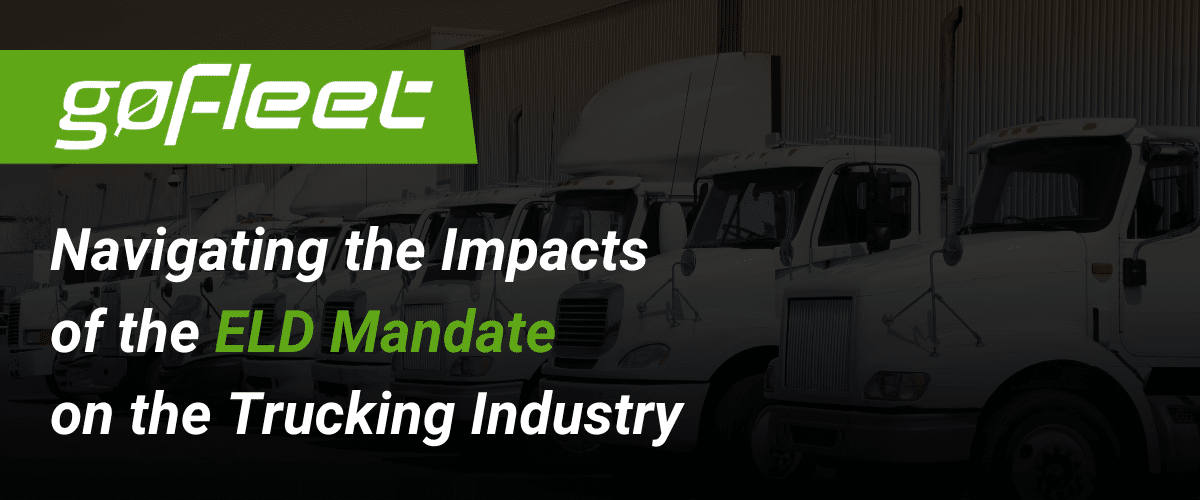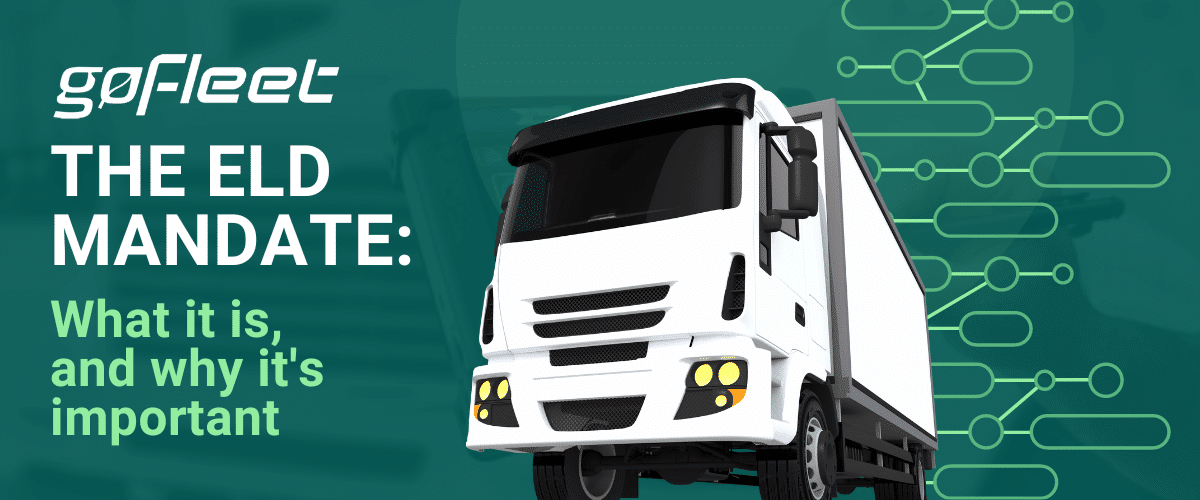Fleet management is a critical aspect of any business with a sizable fleet. With the growing number of vehicles on the road, it has become increasingly challenging to monitor and manage fleets effectively. According to a recent report by MarketsandMarkets, the global fleet management market is expected to grow from $19.9 billion in 2020 to $34.0 billion by 2025, at a Compound Annual Growth Rate (CAGR) of 11.2%. To effectively manage their vehicles, businesses need to implement an efficient fleet vehicle tracking system.
What is a Fleet Vehicle Tracking System?
A fleet vehicle tracking system is a software application that uses GPS technology to monitor and manage the movement of vehicles in a fleet. These systems provide real-time information on the location, speed, and other critical data of each vehicle in the fleet.
According to a report by Allied Market Research, the global fleet management market size was valued at $16.3 billion in 2019 and is projected to reach $34.05 billion by 2027, growing at a CAGR of 10.5% from 2020 to 2027. The implementation of a fleet vehicle tracking system can have a significant impact on a business’s bottom line.
These systems can help reduce fuel consumption, vehicle wear and tear, and maintenance costs. They can also improve driver safety and productivity, which ultimately translates into better customer service and increased revenue. Fleet tracking also allows managers to optimize routes, monitor driver behavior, and provide real-time alerts for critical issues such as accidents or breakdowns.
The Importance of Fleet Vehicle Tracking Systems in Telematics
Fleet vehicle tracking systems use GPS technology, which plays a crucial role in telematics – the integration of telecommunications and information processing technologies in vehicles. These systems enable fleet managers to have real-time visibility and control over fleet operations by monitoring and tracking the location and movement of vehicles.
The implementation of fleet vehicle tracking systems can help fleet managers optimize routing and dispatch, reduce fuel consumption, and improve vehicle maintenance. According to a report by Verizon Connect, fleet managers who leverage telematics data insights can reduce their fuel consumption by 15.8% and lower their vehicle maintenance costs by 14.2%.
By utilizing telematics technology, fleet managers can stay ahead of the competition in the constantly evolving transportation industry, with a report by ResearchAndMarkets projecting the global telematics market to reach $233.24 billion by 2026, growing at a CAGR of 20.7% from 2021 to 2026.
The 6 essential features that should be included in a fleet vehicle tracking system
This revolutionary technology provides fleet managers with real-time visibility and control over their operations, helping them optimize routes, reduce fuel consumption, improve safety, and increase efficiency. However, not all tracking systems are created equal.
Below, we’ve outlined six essential features of a comprehensive vehicle tracking system in detail, and explain how they can help businesses optimize their fleet management. Whether you are a small business with a few vehicles or a large enterprise with hundreds of vehicles, understanding these essential features will help you make an informed decision when choosing a vehicle tracking system.
1. Real-time location tracking to monitor vehicle movement and location
Location tracking is one of the most critical features of a vehicle tracking system. It allows fleet managers to monitor the movements and locations of vehicles in real-time, providing them with the necessary information to make informed decisions about their operations.
With this feature, fleet managers can track vehicles’ movements and ensure that they are staying on course, avoiding traffic congestion, and adhering to safety guidelines.
Real-time location tracking also enables businesses to respond quickly to any unexpected events, such as accidents, traffic jams, or road closures. This feature can have a significant impact on a business’s bottom line, as it enables fleet managers to optimize their operations, reduce fuel consumption, and improve customer satisfaction.
2. Customizable alerts for instant notifications on vehicle status or driver behavior
Fleet managers can set up alerts to notify them of specific events or behaviors, such as speeding, harsh braking, or unauthorized vehicle use. With this feature, management can receive real-time notifications when an issue arises, allowing them to take immediate action to rectify the situation.
Customizable alerts can also be set up to notify managers when a vehicle is due for maintenance, reducing the risk of breakdowns and increasing the overall reliability of the fleet. According to a report by Fleet Management Weekly, customizable alerts can help reduce accidents by up to 50%, making them a vital tool for improving driver safety and reducing liability for businesses.
3. Vehicle maintenance scheduling to keep track of repairs and avoid breakdowns
By keeping track of each vehicle’s maintenance schedule, fleet managers can ensure that they are serviced and repaired regularly, reducing the risk of breakdowns and increasing the lifespan of the vehicles.
With this feature, fleet managers can schedule maintenance appointments, track vehicle usage and performance, and receive notifications when vehicles are due for service. Automated maintenance scheduling can have a significant impact on a business’s bottom line, as it can reduce the risk of unexpected repairs, increase the reliability of the fleet, and lower maintenance costs over time. According to a report by Automotive Fleet, regular maintenance can reduce vehicle breakdowns by up to 75%, making this feature a crucial tool for ensuring the reliability of the fleet.
4. Route optimization and scheduling to optimize the fleet’s driving routes for better efficiency
Route optimization and scheduling is another crucial feature of a vehicle tracking system. With this feature, fleet managers can optimize their fleet’s driving routes to reduce travel time, fuel consumption, and vehicle wear and tear. Route optimization can also help businesses improve their customer service by ensuring that deliveries or services are completed on time. By analyzing traffic patterns and driver behavior, fleet managers can identify the most efficient routes and make real-time adjustments as needed. Additionally, route optimization and scheduling can help businesses reduce their environmental impact by reducing emissions and fuel consumption. A report by Geotab found that route optimization can reduce fuel consumption by up to 15%, making it a valuable tool for businesses looking to reduce their carbon footprint. In summary, route optimization and scheduling is an essential feature of a vehicle tracking system that helps fleet managers optimize their operations, reduce fuel consumption and environmental impact, and improve customer service.
5. Measuring vehicle utilization to efficiently allocate resources
Measuring vehicle utilization allows fleet managers to improve the efficiency of their fleet by tracking how often each vehicle is used, how long it is used for, and how it is being used. By analyzing this data, fleet managers can allocate resources accordingly. For example, if a vehicle is found to be underutilized, fleet managers can consider reducing the size of their fleet, potentially saving money on maintenance, fuel, and insurance costs.
In addition, measuring vehicle utilization can help businesses optimize their operations by identifying areas where they may be able to consolidate trips or share vehicles between departments.
A report by Fleet Management Weekly found that businesses can reduce their fleet size by up to 20% by measuring vehicle utilization, making this feature a valuable tool for reducing costs and improving efficiency.
6. Driver behavior monitoring to track driver performance and improve safety, compliance and fuel efficiency
This feature allows fleet managers to identify risky driving behavior on the road, such as speeding, harsh braking and rapid acceleration. These data sets enable fleet managers to identify areas for performance improvement or additional training to ensure compliance with safety regulations.
Additionally, monitoring driver behavior can help businesses reduce their fuel consumption by encouraging more fuel-efficient driving practices, such as reduced idling and smoother acceleration. According to a report by Geotab, monitoring driver behavior can help reduce fuel consumption by up to 25%.
Furthermore, this feature can help businesses reduce their liability by ensuring that drivers are following safety guidelines and adhering to traffic laws.
Other Critical Features
In addition to the six essential features mentioned, there are several other critical features that a comprehensive vehicle tracking system should include.
Firstly, a good tracking system should have a user-friendly interface that is easy to navigate, allowing fleet managers to access data quickly and efficiently. It should also provide historical data on vehicle performance and driver behavior to help fleet managers make informed decisions about operations.
Secondly, an effective tracking system should offer data analytics and reporting capabilities to help fleet managers gain insights into fleet operations and identify areas for improvement. For instance, a report by the American Transportation Research Institute (ATRI) found that a fleet vehicle tracking system with data analytics and reporting capabilities can help reduce fuel consumption by up to 6%.
A reliable tracking system should also offer geofencing capabilities to help fleet managers set up virtual boundaries around specific areas, such as customer locations or restricted zones. Geofencing enables fleet managers to monitor vehicle movements within designated areas and receive alerts when vehicles enter or leave the designated zones.
Finally, a good vehicle tracking system should be scalable and customizable, allowing businesses to adjust their operations and requirements as their fleet grows or changes. With the global telematics market projected to grow at a CAGR of 20.7% from 2021 to 2026, according to a report by ResearchAndMarkets, businesses must ensure that their tracking systems can accommodate their changing needs.
3 Important questions to ask before you buy a fleet vehicle tracking system
With so many fleet tracking options available, it can be challenging to choose the right system for your business’s unique needs. Before making an investment, there are three essential questions that fleet managers should ask to ensure that they are selecting the best solution for their operations.
By understanding these critical questions, fleet managers can make a more informed choice when selecting a vehicle tracking system, ultimately leading to improved fleet management, reduced costs, and increased customer satisfaction.
1. What are the objectives of integrating a GPS fleet vehicle tracking system for your business?
Organizations should understand their business objectives, and how a fleet vehicle tracking system would meet those needs.
Understanding the objectives of integrating a GPS fleet vehicle tracking system is essential for potential clients because it allows them to evaluate the system’s benefits, compare different vendors and offerings, and determine the return on investment for their business.
By understanding these objectives, potential clients can determine if a GPS fleet vehicle tracking system aligns with their business goals and objectives, making an informed decision about which vendor and offering to choose.
Some objectives of integrating a GPS fleet vehicle tracking system may include optimizing routes and dispatching, improving driver safety, reducing fuel consumption and maintenance costs, and improving customer satisfaction.
2. How many vehicles need to be tracked?
To ensure that the vendor’s offering can accommodate their specific needs, and to determine the scale and scope of the GPS fleet vehicle tracking system that they require, businesses need to identify the number of vehicles that need to be tracked. For example, a small business with a few vehicles may only require a basic tracking system with minimal features, while a large enterprise with hundreds of vehicles may require a comprehensive system with advanced features such as route optimization, driver behavior monitoring, and customized alerts.
Knowing the size and scope of their fleet means that potential clients can ensure they are selecting the right system for their business’s unique needs, avoiding unnecessary expenses or limitations that may arise from selecting a system that is either too large or too small for their operations.
In addition, knowing the number of vehicles that need to be tracked enables the vendor to provide a more accurate quote for their services, ensuring that potential clients can make an informed decision about which vendor and offering to choose.
3. What is the budget, including upfront and monthly costs?
Understanding the costs associated with a GPS fleet vehicle tracking system is essential for potential clients because it enables them to evaluate the system’s value and compare different vendor offerings. In addition, knowing the upfront and monthly costs ensures that the GPS fleet vehicle tracking system is affordable and fits within their financial constraints.
By asking vendors about the budget, potential clients can gain a clear understanding of the costs associated with implementing and maintaining a GPS fleet vehicle tracking system, including upfront hardware costs, software costs, installation costs, and ongoing monthly fees.
By evaluating these costs, potential clients can determine if the system’s benefits outweigh the price tag, ensuring that the system is a worthwhile investment for their business. Additionally, knowing the budget allows vendors to provide tailored solutions that meet the client’s financial requirements, such as offering different pricing plans or customization options to fit within the client’s budget.
Conclusion
Implementing a fleet vehicle tracking system is a complex process. The features to look for as outlined here can have a significant impact on a business’s bottom line.
Real-time location tracking, customizable alerts, vehicle maintenance scheduling, route optimization and scheduling, measuring vehicle utilization, and driver behavior monitoring can help businesses optimize their fleet management, reduce costs, improve efficiency, and enhance customer satisfaction.
By leveraging data-driven insights and making informed decisions, fleet managers can stay ahead of the competition in the constantly evolving transportation industry. Are you ready to take your fleet management to the next level? Contact us today to learn more about how our GPS tracking solution can provide you with the must-have features you need for optimal fleet performance. Schedule a demo now and take the first step towards improving your operations!







